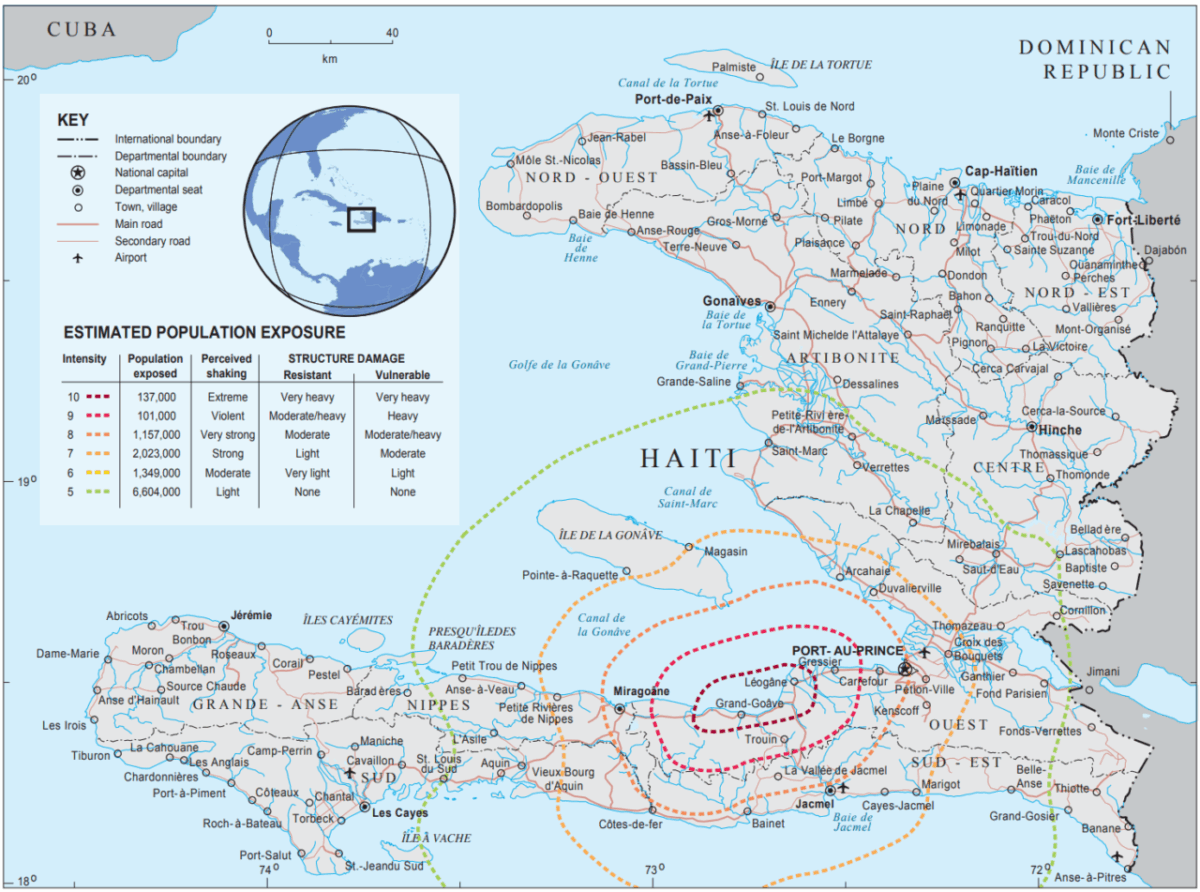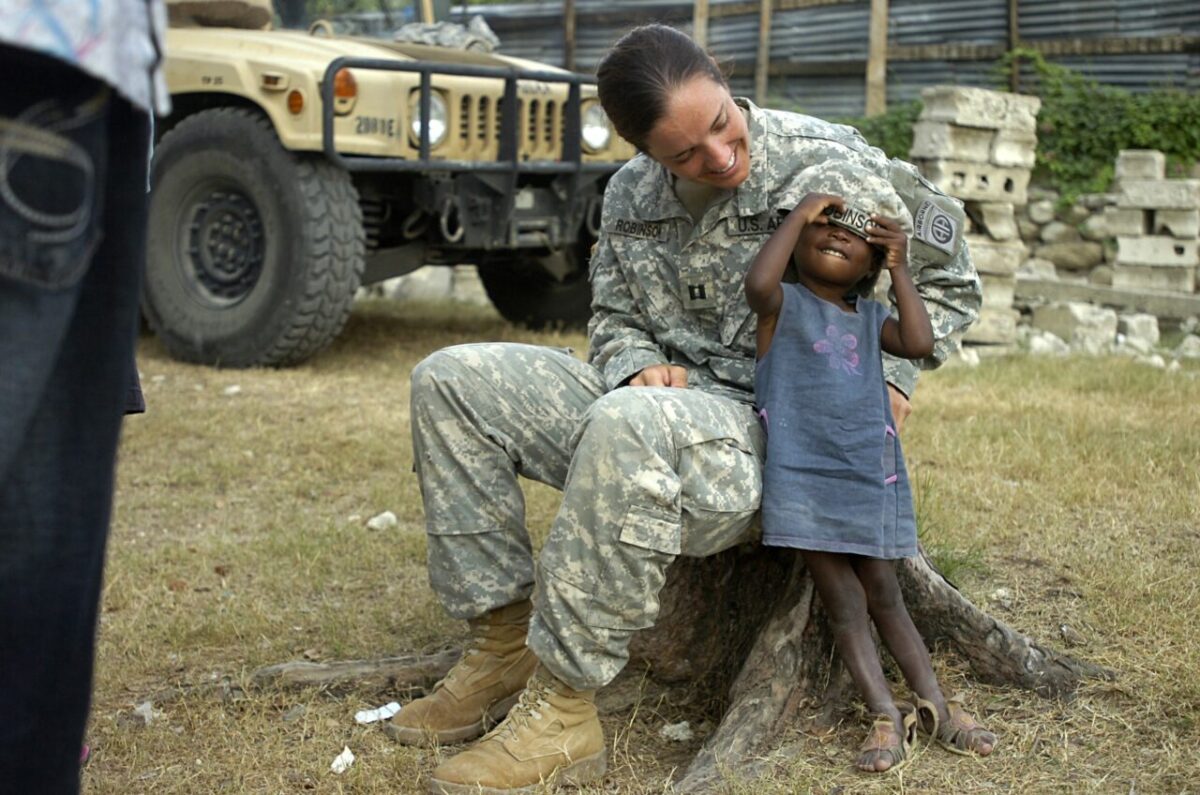Haiti was subject to a massive earthquake in 2010 that significantly damaged an already fragile country.
The response from the international community provides an excellent case study for those interested in disaster response logistics, both military and civilian.
This is one of a series of posts.
The introduction will describe the earthquake and its impact, followed by a look at the maritime logistics in and around Port-au-Prince, and air response at the Toussaint Louverture International Airport, closing with a comparison and summary.
Haiti
Haiti is an unfortunate country, despite being the first independent Caribbean, since the late fifties it has been blighted by dictators, criminality, huge wealth disparity, and pretty much every problem a nation could have.
The USA had many security interests in the country; it was a major source of mass migration, and weak governance meant it was a haven for drug transhipment activities.
Former President Bill Clinton had only recently been appointed UN Special Envoy to the country.
US forces had also intervened militarily several times, most recently in 2004 in Operation Restore/Uphold Democracy.

Less than 10% of the population had access to potable mains water and access to a stable electricity supply was also constrained, even before the earthquake.
It was significantly reliant on foreign aid and reportedly had more NGOs operating there than any other nation.
The 2010 Haiti Earthquake
On the 12th of January 2010 at 21:53:10 UTC (16:53:10 local) a magnitude 7 earthquake struck 16 miles (25.75 kilometres) west of Port-au-Prince, at a depth of 13 km.
It was reported to be the strongest earthquake in the country since 1770.
U.N. Stabilization
Wikipedia provides a good summary.
The earthquake caused major damage in Port-au-Prince, Jacmel and other cities in the region. Notable landmark buildings were significantly damaged or destroyed, including the Presidential Palace, the National Assembly building, the Port-au-Prince Cathedral, and the main jail.
230,000 people died, 197,000 were injured and over 1.2 million were displaced.
60% of the government infrastructure was destroyed and over 100,000 homes were destroyed, with many more damaged beyond repair.
Haiti was not well-endowed with ports and airports, and the earthquake epicentre was close to the main ones of both.

The nation’s ability to import food and essentials was severely damaged.
It also severely affected the UN presence in the country
The headquarters of the U.N. Stabilization Mission in Haiti (MINUSTAH) was destroyed, killing its head, deputy head, and many others.
It was a disaster of enormous proportions.
The Response
Within hours of the earthquake, aid agencies, commercial organisations and government agencies started to mobilise.
President René Preval despatched several of his ministers, on motorcycles, to the home of the US Ambassador to Haiti (Ken Merten) with a request for emergency aid.
Understanding the criticality of air and seaports, the first requests were related to the airport.
Although the response was international, it was still dominated by the US, primarily USAID and the DoD.
The day after the earthquake, an advance party arrived from the Department of Defense to establish what support could be provided.
The necessary authorisations and administrative processes were enabled and commanding the new Joint Task Force – Haiti (JTF-H), was Lt General PK Keen, who rather conveniently, was already in Haiti at the time of the earthquake.
I have directed my administration to respond with a swift, coordinated, and aggressive effort to save lives. The people of Haiti will have the full support of the United States in the urgent effort to rescue those trapped beneath the rubble, and to deliver the humanitarian relief — the food, water and medicine — that Haitians will need in the coming days. In that effort, our government, especially USAID and the Departments of State and Defense are working closely together and with our partners in Haiti, the region, and around the world.
President Barack Obama, January 13, 20103
Lt General Keen was able to quickly set up his command post in the US embassy, one of the few buildings in Port-au-Prince that was undamaged.
The response was given a name, Operation Unified Response.
The United Nations also established Disaster Assessment and Coordination (UNDAC) and the UN Office for the Coordination of Humanitarian Affairs (OCHA) teams.
OCHA was the lead agency and created the Joint Operations Tasking Centre (JOTC) to coordinate military and civilian efforts, creating 12 clusters, from logistics and telecommunications to food and health matters.

Over one thousand organisations participated in the response.
The Series of Posts
The scope of the international humanitarian response to the earthquake would require a document ten times the size of this one. So instead of looking at strategic communications, command and control, the civil-military interface, information management and dissemination, medical responses, and rubble management, instead, I am going to look at two elements.
- Introduction
- Over the Shore Logistics in and around Port International de Port-au-Prince
- Air Operations and Toussaint L’Ouverture International Airport
- Observations
Read on…
Discover more from Think Defence
Subscribe to get the latest posts sent to your email.





